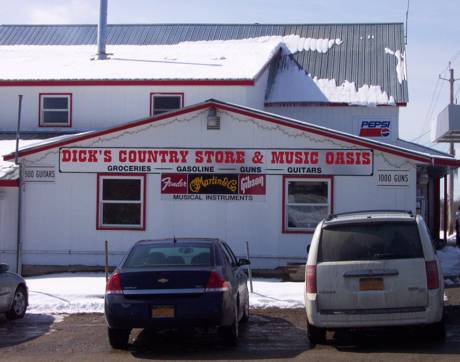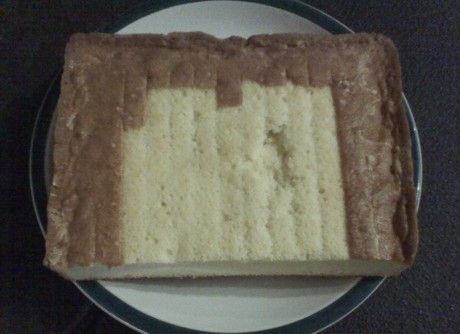
Monthly Archives: March 2012
Tuesday Twilight
Pooh Was Not an Early Adopter
I am a Bear of Very Little Brain, and long words bother me.
It is more fun to talk with someone who doesn’t use long, difficult words but rather short, easy words like “What about lunch?”
“An early adopter or lighthouse customer is an early customer of a given company, product, or technology; in politics, fashion, art, and other fields, this person would be referred to as a trendsetter.”
I’m not old enough to have bought RCA’s CT-100, the first production color TV, but I did carry the first battery powered transistor radio to my elementary school so I could be schooled in the proper musical offerings of WFIL.
And speaking of appliances, we were about the last on the block to get a television at all (it was a 19″ black-and-white RCA that my dad bought used for $75 in 1955) and the last to get a microwave oven. I bought that new, but it was by then deeply discounted.
The “early adopter tax” refers to the trend of new products costing more when they first go on sale than later in the product cycle.
I hate to pay taxes. Hate it.
On the other hand, my great-grandfather had the first railroad train in a front yard in Doe Run and we were the first on our block to own a boat.
I’m a gadget guy from a long line of gadget guys but since bright and shiny long words like early adopter never swayed us, we ended up buying what we needed at the time we needed it, rather than the moment it appeared on the market.
I may not have been the first kid to trade my slide rule for a calculator but I was certainly in the top few; that was in the days when a good K&E slip stick cost $29.95 and the nixie-tube, 4-function calculator cost $179.95, about six times that. Of course the calculator could add and subtract, something I have never done effectively on a slide rule.
I never owned an IBM 5150, but I did build a Sinclair ZX80 which I replaced with one of the early Commodore C-64s. I ran my first business on that Commodore computer and might still be using it today had not the spreadsheets gotten too large for storing on a single floppy disk. My friend Rufus has a Betamax somewhere. On the other hand, he gave up his Pulsar watch for a Casio C-801 about 30 seconds after it arrived on the market. He still has a couple of those.
Liz Arden switched briefly from a standalone GPS to the Google-driven app in her smartfone. She just bought a new GPS because it works better.
Today, I travel with a GPS (see above paragraph), an iPod Touch which I use as my PDA, and a “feature” cellphone. I think that’s all I need for now. Of course, I’ll be on a great silver bird in the sky on Wednesday where I’ll find a Sky Mall in every seat pocket.
Is it time for lunch yet?
Wordless Wednesday

Santana Strumming
One of my oldest friends sent me the Geezer Test! Are You “Older than Dirt?” It included a question that took me back 45 years.
How was Butch wax used?
a. To make floors shiny and prevent scuffing
b. To stiffen hair cut into a flattop so it stood up
c. On the wheels of roller skates to prevent rust
My granddaughter doesn’t understand my haircut.
There’s a (back)story. Of course, there is always a story. When I was born (OK, it’s a longish story) I was covered with fine, black hair that started at my eyebrows — or perhaps started as my eyebrows — and continued up, over, down my back, around my toes, and all the way back to my nose. My grandmother was aghast. And worried.
She needn’t have worried. Men’s hair falls out.
 Mine did, but then a lot of it grew back.
Mine did, but then a lot of it grew back.
My mom’s favorite baby picture of me as about an 18-month old came before my first ever haircut. My folks, having grown up in the Depression and then gone through WWII, considered the crew cut the height of fashion. They subjected me to the weekly travail of itchy fur down the back of my shirt all the way through high school.
In early 1921 Mathew Andis, Sr. built the first electric hair clipper but the John Oster Manufacturing Company became the USA industry standard in 1928. I never knew a barber without that particular sheep shearing implement.
I rebelled in senior high. It was the era of the Mop Top Beatles so I grew my crew cut out into a … flat top!
“A flattop is a type of very short hairstyle similar to the crew cut,” Wikipedia reports “with the exception that the hair on the top of the head is deliberately styled to stand up (typically no more than an inch) and is cut to be flat, resulting in a haircut that is square in shape. It is most often worn by men and boys, particularly those in the military and law enforcement in the United States.
“The haircut is usually done with electric clippers to cut the side and back hair to or near the scalp, and then more intricate cutting is done on the top hair to achieve a level plane. When cutting a new flattop, the top hair is usually cut to about an inch long, then blow-dried to stand up straight, and then finally cut with clippers and scissors to achieve the final look. Wax can be used to stiffen the front of the flattop.”
The real issue with a flat top is that it leaves a nearly bald strip right down the center of that aircraft carrier landing deck on the very top of one’s head. Some few flat top fanciers worry about drones landing there but that rarely happens here in the States.
 I shaved my head for the Cap Cancer fund raiser and kept it shaved until about November of that year. It gets cold in Vermont about September. I let my hair grow out a little for insulation and discovered I had enough to square it off. Woo hoo!
I shaved my head for the Cap Cancer fund raiser and kept it shaved until about November of that year. It gets cold in Vermont about September. I let my hair grow out a little for insulation and discovered I had enough to square it off. Woo hoo!
A real flat top, baby! No butch wax, though.
I don’t exactly want to fess up to thinning hair but I am 62 now and the hair atop my head is still fine but no longer black. In fact, my beard is white and most of the hair above it is steel gray. About the same color as the navy paints its carriers. Unfortunately, the hair at my very crown is finer and whiter than anywhere else. It is very hard to see. Especially when it’s just 1/8″ long.
My granddaughter says it looks like I’m bald down the middle with a row of fence posts down the sides.
Kids have no sense of history.

